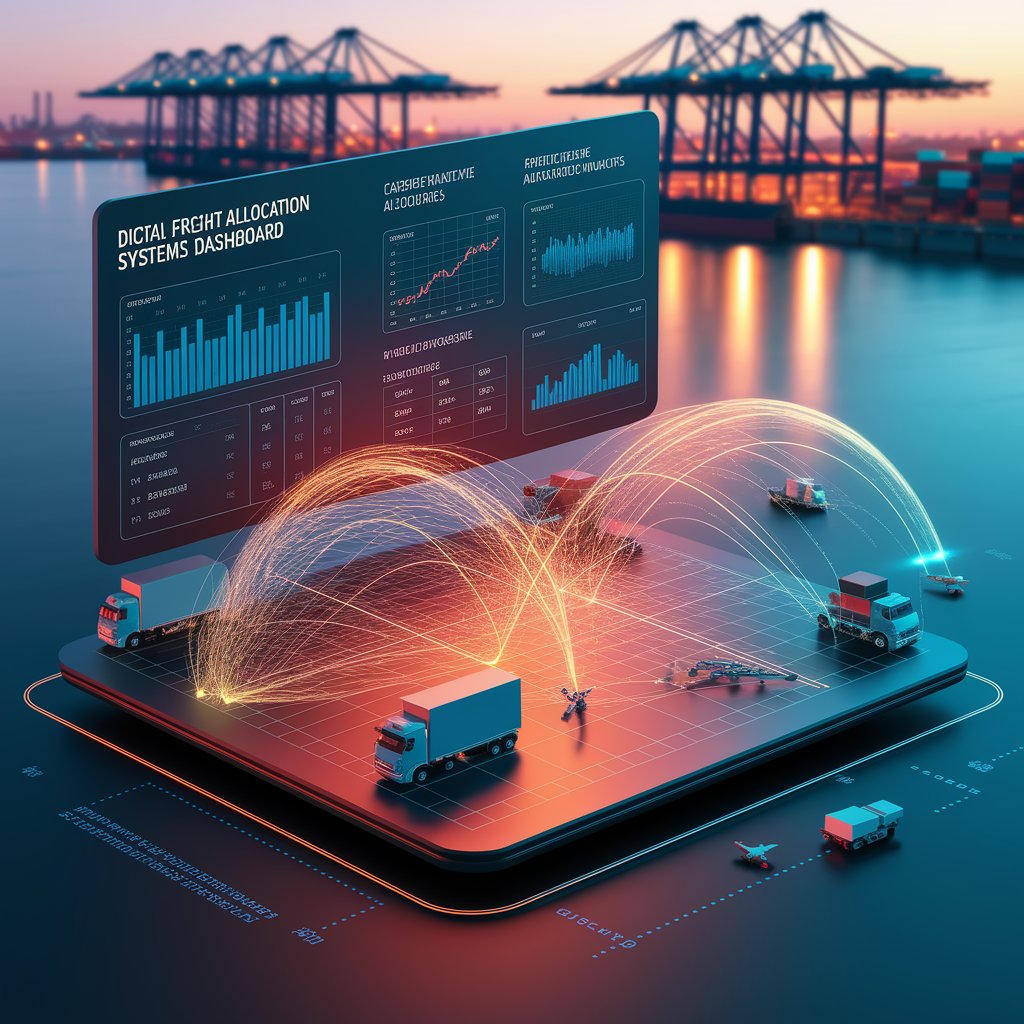Digital Freight Allocation Systems: Smarter Capacity Management for Global Logistics

Introduction
Now, businesses are turning to digital freight allocation systems. These platforms leverage automation, AI, and real-time data to streamline allocation, ensure better carrier utilization, and provide full transparency in freight management.
What Are Digital Freight Allocation Systems?
Digital freight allocation systems are cloud-based platforms that automate the process of assigning freight shipments to carriers or modes of transport. They integrate with ERP, TMS, and carrier networks to:
- Match shipments with available capacity.
- Optimize allocation based on cost, time, and service level.
- Automate tendering and acceptance workflows.
- Provide visibility into allocation performance and carrier compliance.
Instead of reactive decisions, these systems deliver data-driven freight allocation for greater efficiency and profitability.

Key Features of Digital Freight Allocation Systems
- Automated Carrier Selection – Assign shipments to the most suitable carriers.
- Dynamic Allocation Rules – Adjust based on cost, capacity, and service performance.
- Tender Automation – Digital requests and carrier confirmations in real time.
- Predictive Analytics – Forecast capacity shortages and adjust allocations proactively.
- Performance Dashboards – Track carrier compliance, costs, and service levels.
- Multi-Modal Integration – Cover trucking, rail, sea, and air freight.
Benefits of Digital Freight Allocation Systems 📈
- Cost Reduction – Minimize manual errors and secure competitive rates.
- Efficiency Gains – Automate repetitive allocation and tendering tasks.
- Better Capacity Utilization – Ensure no wasted space across fleets.
- Improved Transparency – Full visibility into allocation decisions.
- Stronger Carrier Relations – Build trust through fair, data-driven assignments.
- Resilience – Adjust allocations instantly during disruptions.

Real-World Applications
- Freight Forwarders – Automate multi-carrier allocation to meet client demands.
- Carriers – Balance load distribution and reduce empty miles.
- E-commerce Companies – Manage high shipping volumes efficiently.
- Cold Chain Providers – Ensure sensitive goods are matched with compliant carriers.
- Global Shippers – Improve performance across multiple trade lanes.
Challenges in Digital Freight Allocation Systems
- Integration Complexity – Connecting legacy ERP/TMS with new platforms.
- Data Accuracy Issues – Poor shipment data reduces optimization quality.
- High Implementation Costs – Advanced allocation systems require investment.
- Carrier Resistance – Some partners may hesitate to adopt digital workflows.
- Cybersecurity Risks – Protecting sensitive freight and contract data is crucial.

Best Practices for Success
- Start with High-Volume Trade Lanes – Apply automation where allocation matters most.
- Standardize Data Inputs – Ensure accurate shipment and carrier data.
- Integrate Seamlessly – Connect ERP, WMS, TMS, and carrier systems.
- Leverage Predictive Insights – Anticipate shortages or demand surges.
- Train Teams & Partners – Build adoption across internal and external stakeholders.
- Measure ROI Continuously – Track cost savings, efficiency, and service performance.
The Future of Digital Freight Allocation Systems 🚀
- AI-Powered Allocation Engines – Smarter assignments based on live market conditions.
- Blockchain Integration – Transparent, tamper-proof allocation and contracting.
- Digital Twins for Freight – Simulate allocation strategies before execution.
- Collaborative Freight Ecosystems – Shared allocation platforms for shippers and carriers.
- Sustainability-Driven Allocation – Prioritizing green carriers and eco-friendly modes.
Conclusion
Digital freight allocation systems are redefining freight management by replacing manual, error-prone processes with AI-powered automation. By optimizing carrier selection, increasing transparency, and ensuring efficient use of capacity, they give companies the agility to thrive in today’s competitive logistics landscape.
For freight forwarders, carriers, and shippers, adopting isn’t just about efficiency—it’s about building smarter, more resilient supply chains.
